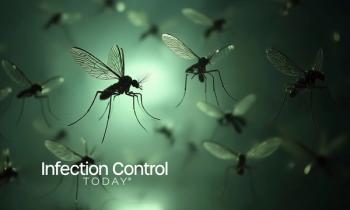
Researchers Emphasize the Importance of Recognizing Blood Poisoning Quickly
Speed can save lives especially in the case of blood poisoning. The more quickly and directly doctors recognize and treat sepsis, the greater the patients chances of survival. With the help of a new biochip, physicians will now be able to analyze blood within their own practice.
Is the patient suffering from blood poisoning? To answer this question, the doctor draws a blood sample and sends it to a central laboratory for testing. This takes up valuable time, which could cost the patient his life. In future, physicians will be able to analyze blood there and then and have the results within twenty minutes. This is made possible by a biochip, developed by scientists at the Fraunhofer Institute for Physical Measurement Techniques IPM in Freiburg.
To analyze the biochip we have also designed a fully automatic device to carry out all the examination steps, explains Dr. Albrecht Brandenburg, group manager at the IPM. All the doctor has to do is place the sample in the apparatus and wait for the results.
Meanwhile, within the device theres plenty going on: it starts by preparing the blood sample. Red blood cells are separated from the blood and the plasma that remains is guided onto the biochip. When patients are suffering from sepsis, their immune system reacts by producing certain proteins. The biochip uses these in its diagnosis: there are antibodies positioned on the chip which fit these proteins like a key fits a lock. If the proteins are present in the blood, the antibodies fish them out of the fluid and bind them to the chip. But how does the apparatus know if proteins have been caught?
 The chip is rinsed with a solution containing the appropriate antibodies, which have in turn been marked with a fluorescent dye, explains IPM scientist Dr. Manuel Kemmler. These bind to the proteins meaning antibodies, protein and marked antibodies are all firmly linked to each other and to the chips surface. When the chip is illuminated, the dye lights up. The apparatus sees lots of little illuminated dots that show the protein was in the blood. If the patient is healthy, however, the chip remains dark.
The researchers can even test for different proteins at the same time in one cycle. This is done by placing various different catcher molecules on the chip, to which specific molecules in the blood attach themselves. A cunning selection of proven protein markers allows the scientists to obtain additional important information about the severity and cause of the illness.
Together with colleagues from a university hospital, the researchers have already successfully tested prototypes of the device and biochip. Each biochip can only be used once so they have to be affordable.
We predict that in the long run, with production on a large enough scale, each chip will cost no more than one euro, says Brandenburg. There are various possible applications: other conditions such as heart attacks or cancers can also be investigated this way. Whats more, the chip facilitates doping and urine testing as well as the quality assessment of foodstuffs.
Newsletter
Stay prepared and protected with Infection Control Today's newsletter, delivering essential updates, best practices, and expert insights for infection preventionists.





